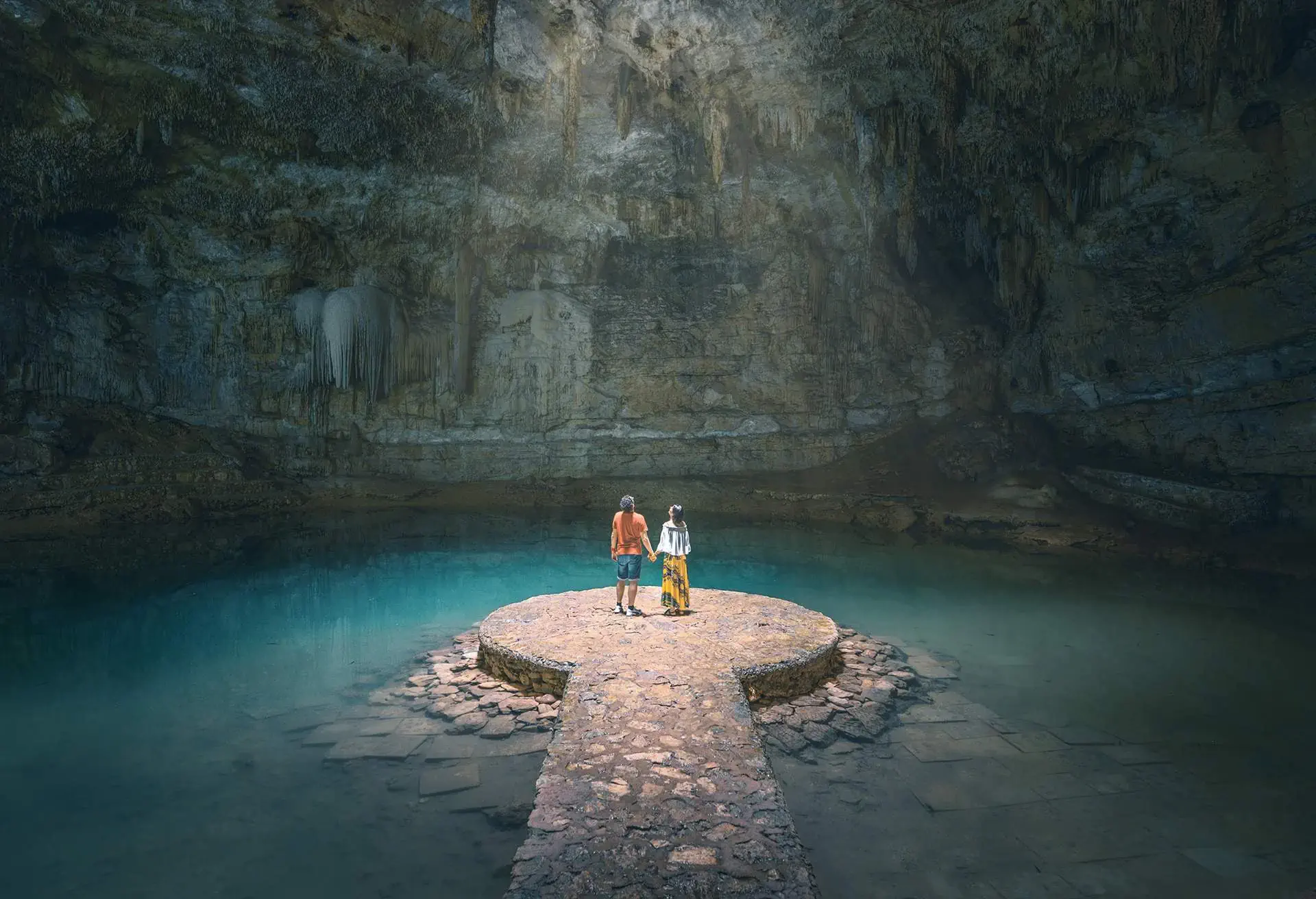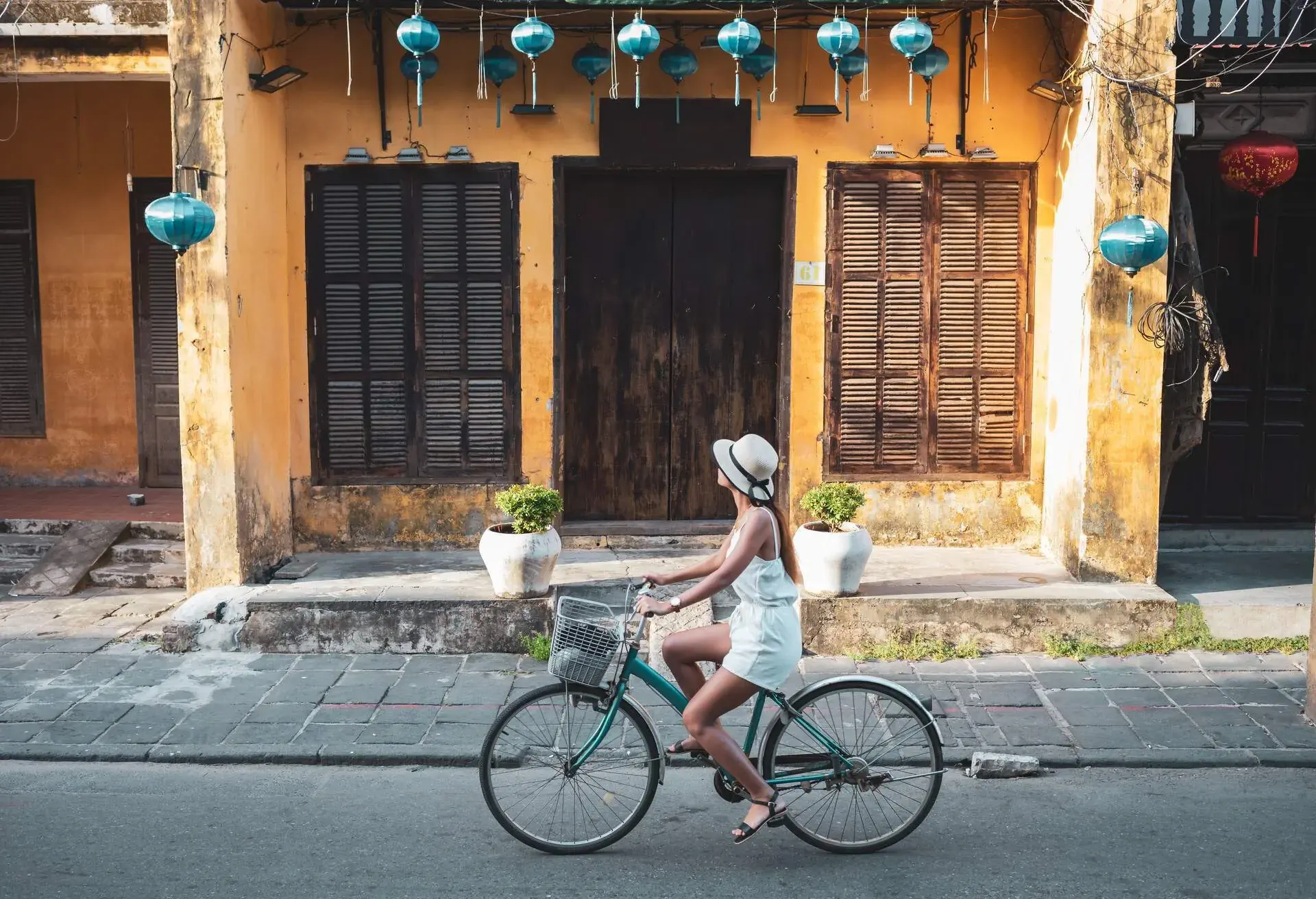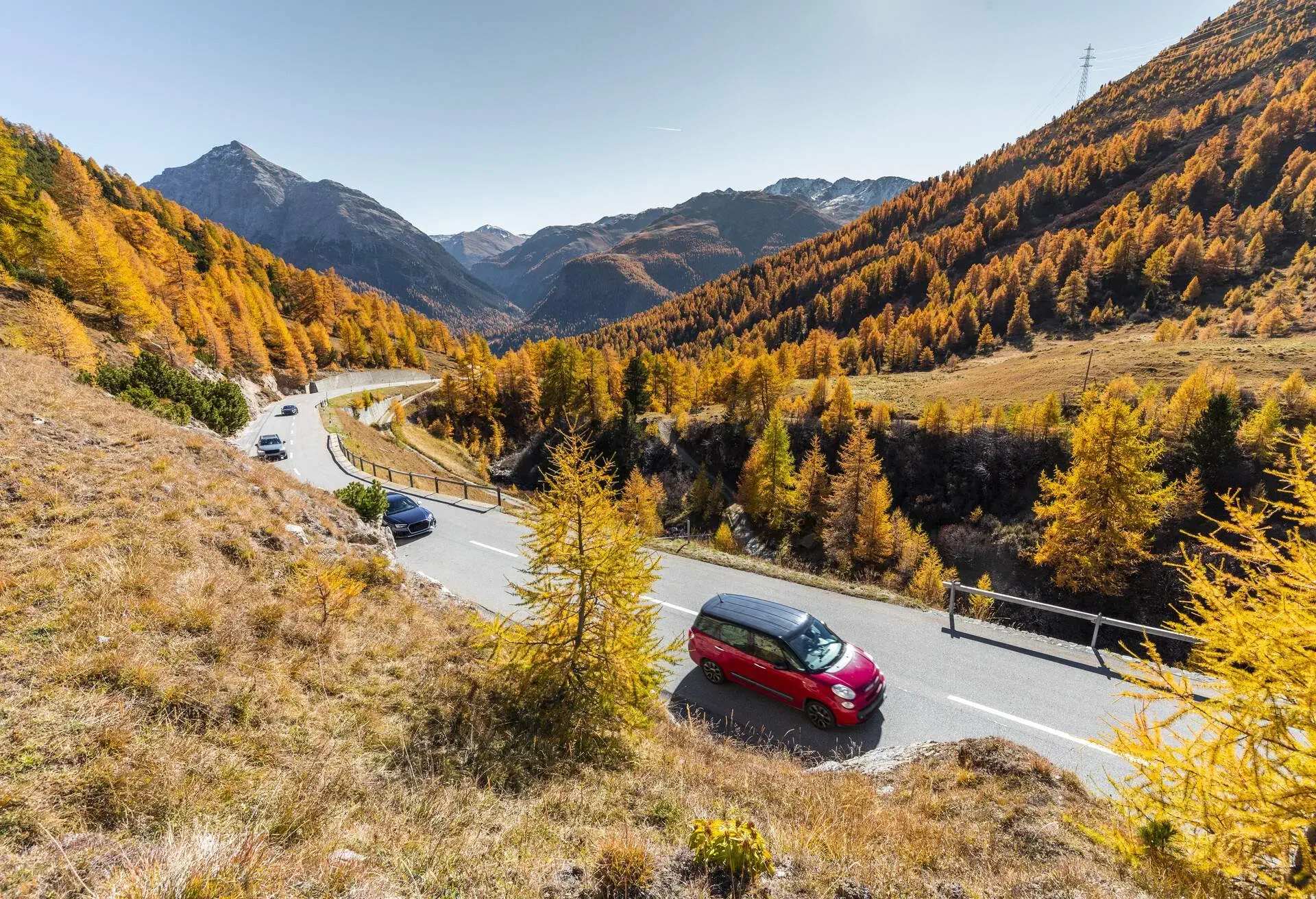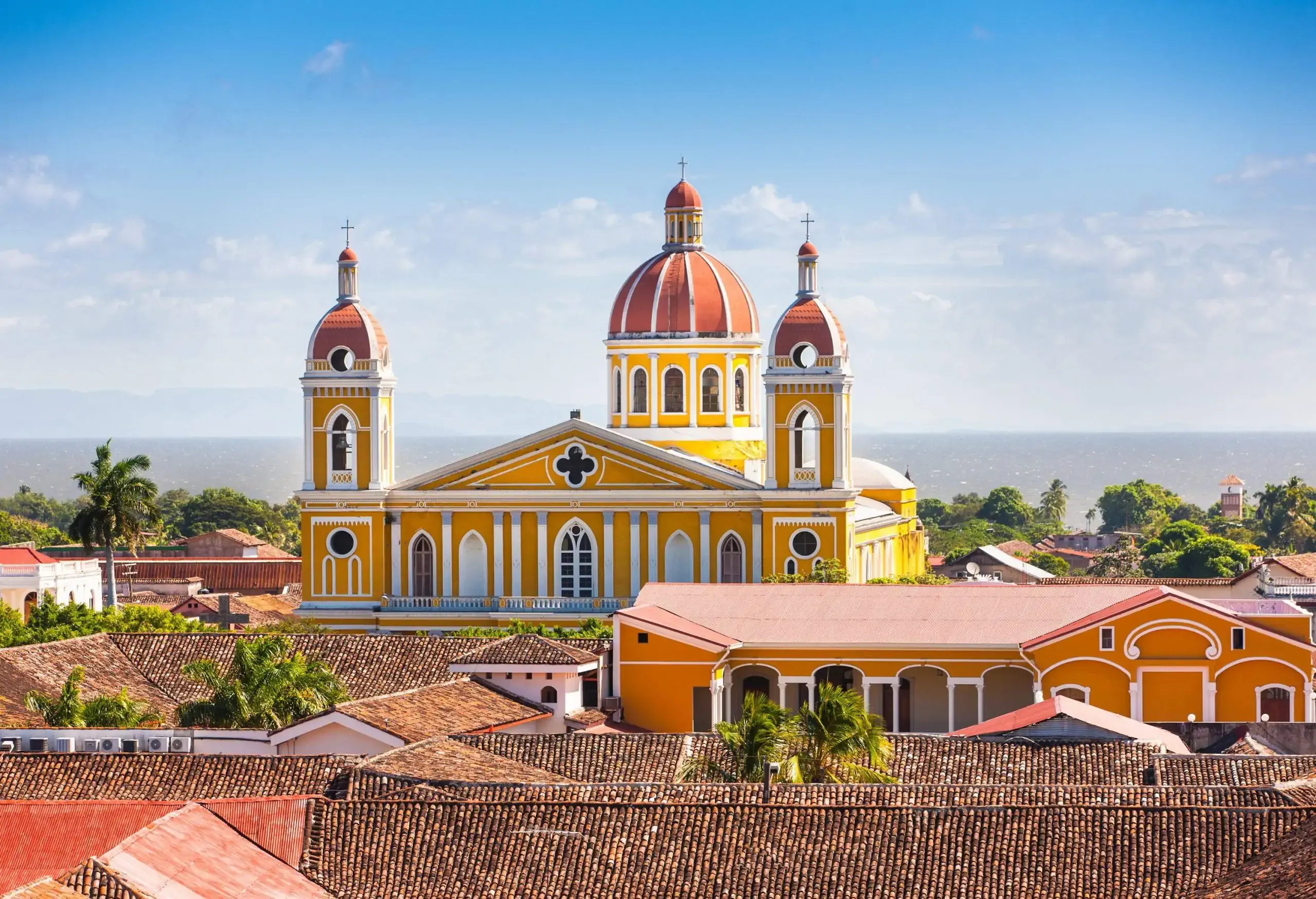The best places to visit in Mexico offer a variety of holiday experiences from white-sand beaches to hiking across some of the most astounding landscapes with rainforests and famous ruins. It is the ultimate holiday destination, bound to leave everyone happy.
Best places to visit in Mexico
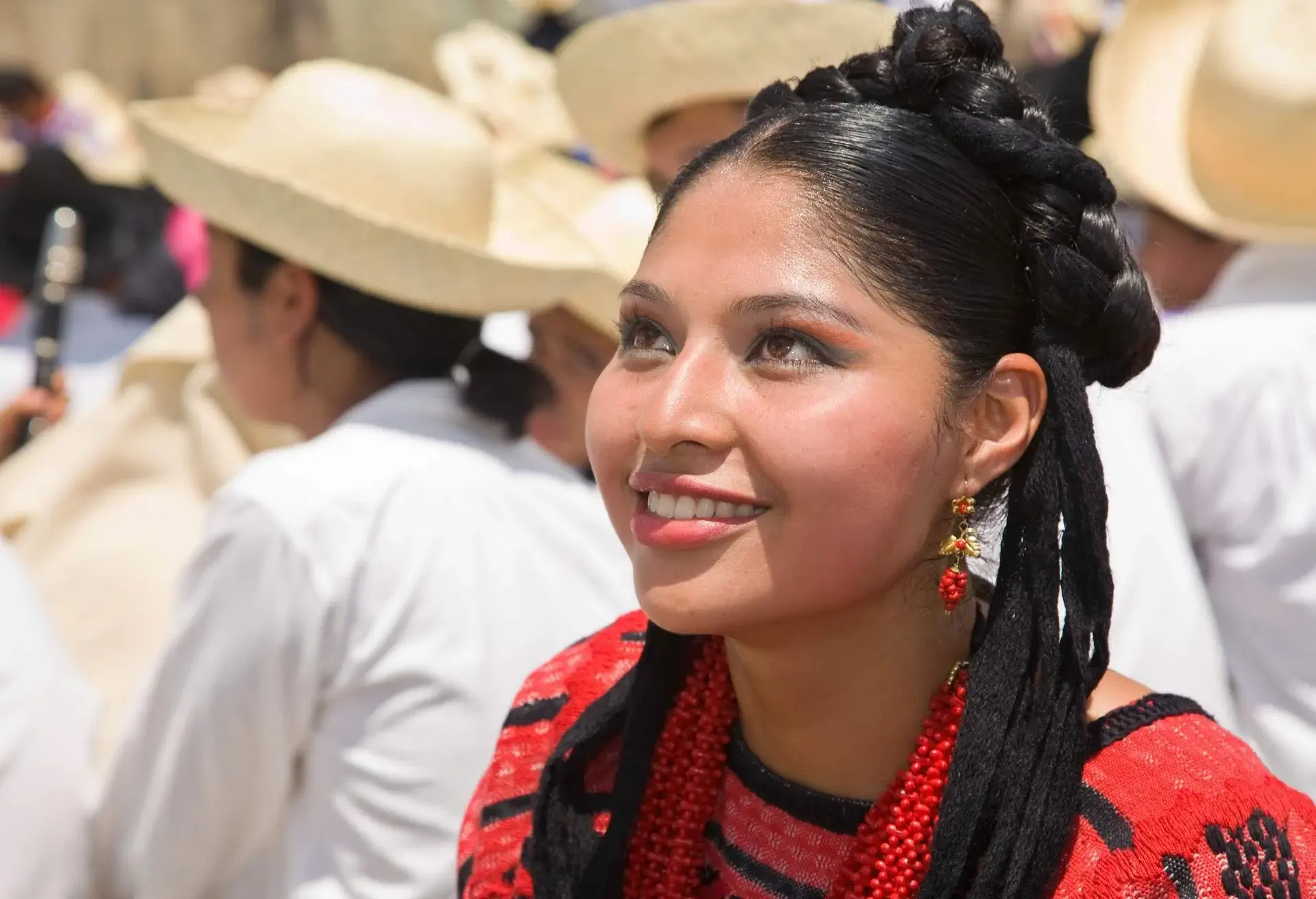
With pristine beaches along the Caribbean Coast, colorful markets in urban cities, and quaint colonial villages, the best places to visit in Mexico offer something for everyone. While history buffs can get their fill of ancient Mayan ruins found almost everywhere in the country, there are also colonial towns to contend with.
For the foodies, Mexico is renowned for its flavors, so you won’t be short of eating options; choices range from upmarket restaurants to authentic market squares. Try a street stall hamburguesa in Oaxaca and a plain burger will never cut it again. Here, it’s topped with a hotdog, cheese, pineapple, jalapenos, and ham. These are just a few of the experiences that await you in Mexico.
Mexico City
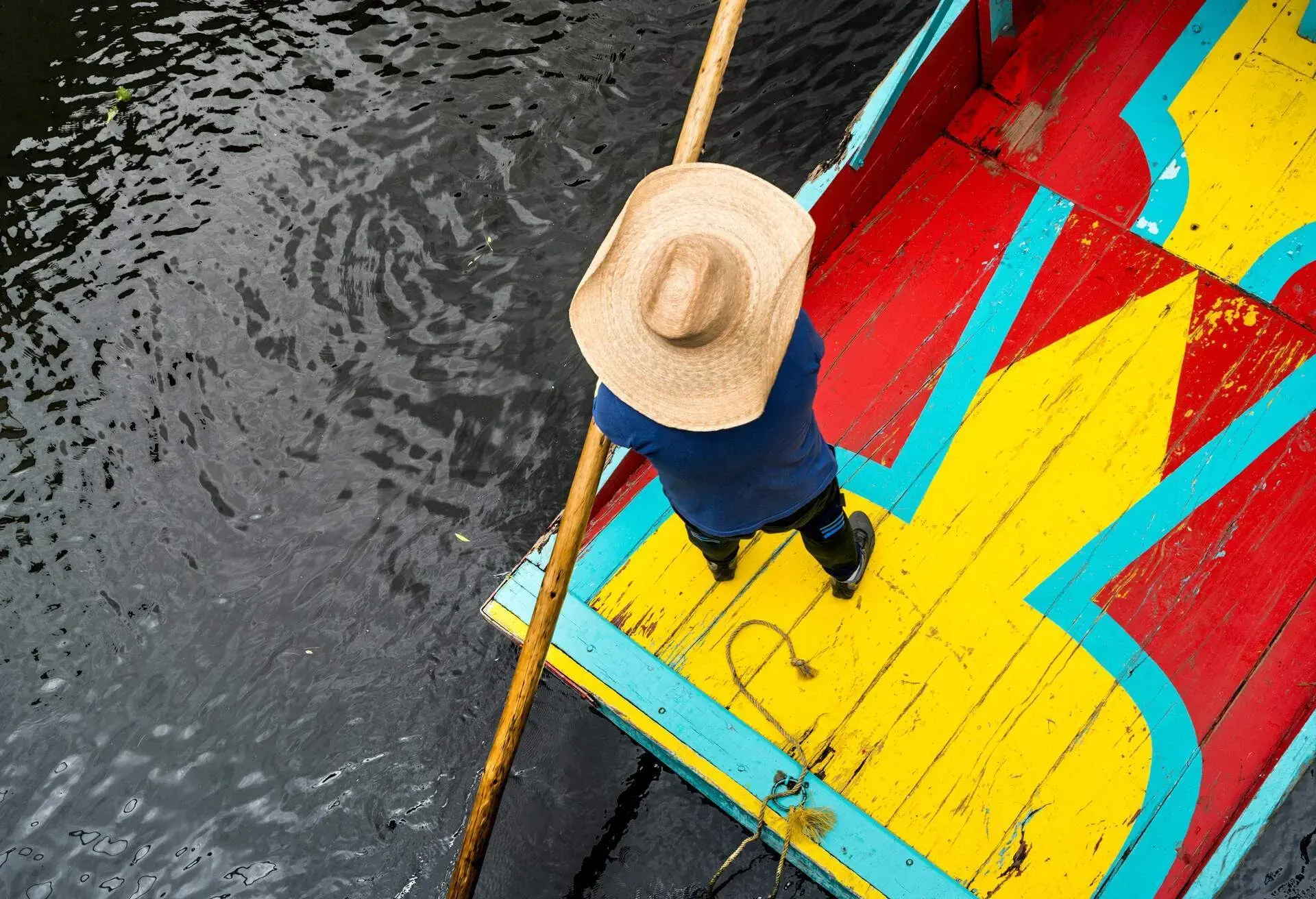
Both a state and city, Mexico City is one of the top destinations in Mexico. A bustling metropolis with an exploding culinary scene where you’ll find top-notch restaurants and incredible street-food markets. It’s a gentle ease into a vibrant culture. Downtown is an area packed with colonial-era and pre-Hispanic architectural splendor.
With restricted car access, it’s great for a stroll to drink everything in. Additionally, Alameda Central is where you’ll find the impressive Palacio de Bellas Artes, home to some of the greatest works by Mexican artists.
It contains various impressive and important murals, including that by Diego Rivera, recreated from the one destroyed at the Rockefeller Center due to its capitalistic theme.
The neighborhoods of La Condesa and Roma consist of wide boulevards lined with trees and elegant mansions and boutiques, great for retail therapy and people-watching. A bit further out from the city center, Coyoacan is a maze of cobbled streets with authentic restaurants and cafes and where you’ll find various museums. Along these cobbled streets is a house with a bright blue door, Frida Kahlo’s former home, now Museo Kahlo.
Cholula
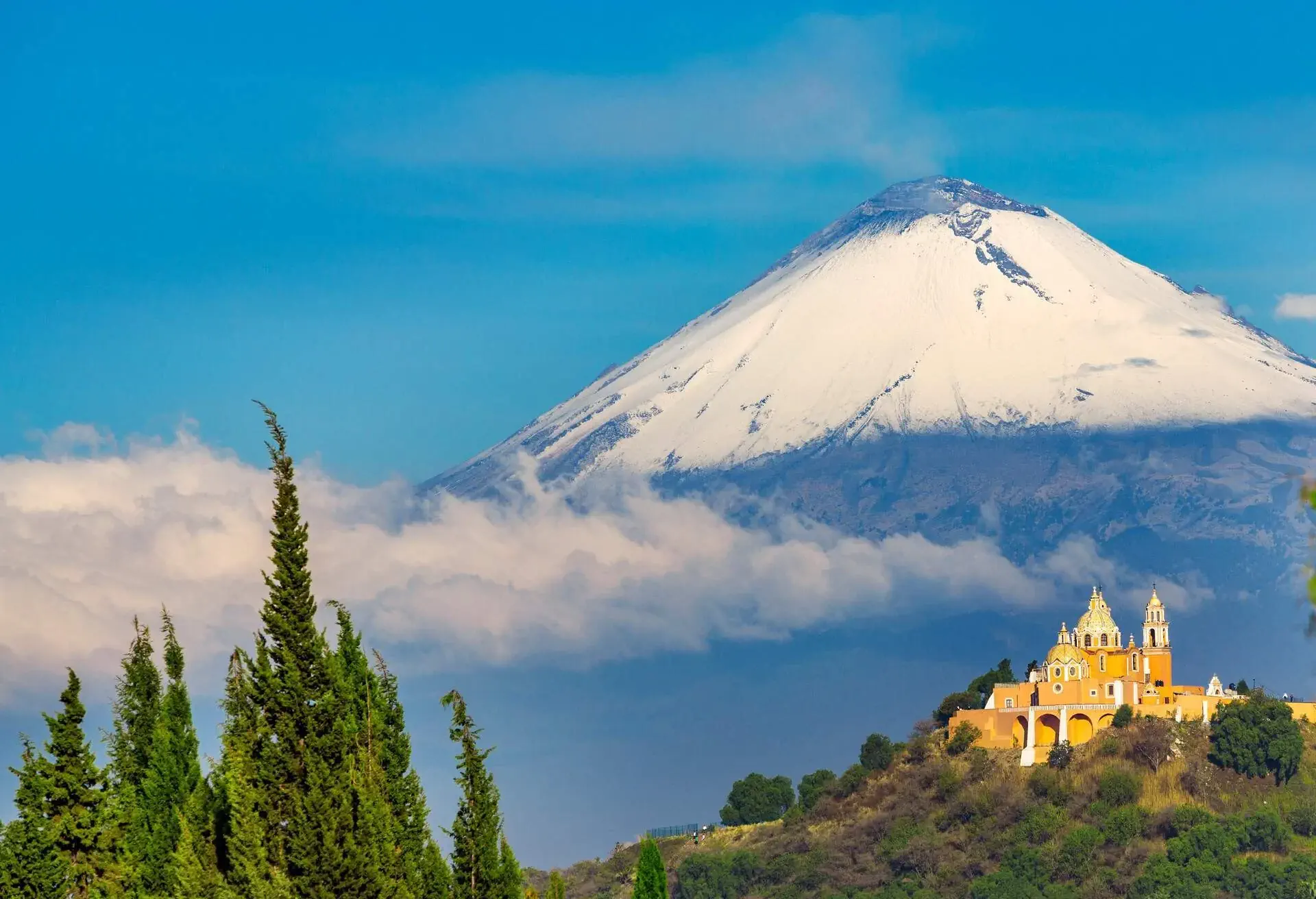
Traveling further southeast of Mexico City brings you to Cholula. Cholula was a town of great religious and economic importance during the Mesoamerican civilization, long before the Spanish arrived, confirmed by way of the once mighty Tlachihualtepetl. The remaining ruins of this magnificent pyramid, one of the largest pyramids ever constructed by ancient civilizations in the Americas, are one of the main draws to this city near Pueblo.
You can access the tunnels under the pyramid through the Museo Regional de Cholula, which is the perfect place to gain more knowledge about its construction. Along with ceramic artifacts recovered from the site, there are some intriguing panels that detail the building of the temple.
The Baroque Spanish-style church of Sant Gabriel, the oldest Christian building in the Americas, is as intriguing as the history of the place. Constructed on the site of a temple that the Spanish destroyed, it’s thought to have burned over two days; its facade is ornately decorated in the Plateresque style.
Away from the city, there are great hiking options. Try hiking the pine-scented trails at Cerro Zapotecas, from which you can see the great pyramid and the tips of the volcano Popocatepetl. If you’re feeling brave, give the Pico de Orizaba, also known as Citlaltepetl, a go — it’s the highest mountain in Mexico.
Oaxaca State
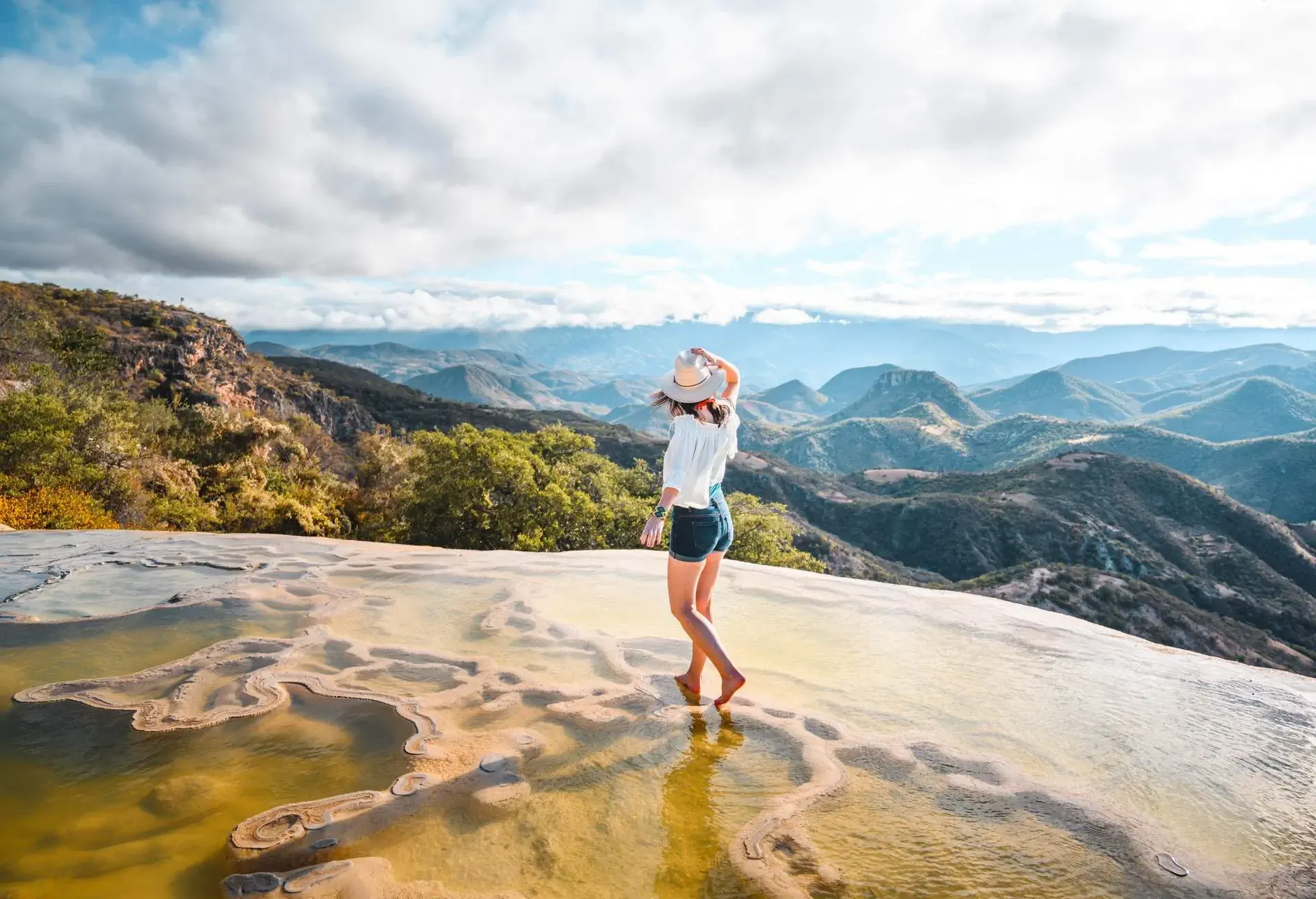
Not far from Pueblo, you’ll come to the state of Oaxaca, whose capital city goes by the same name. The city and neighboring towns are where to be between the 31st of October and the 2nd of November. It holds one of the biggest Day of the Dead celebrations, one of the best things to do in Mexico.
People travel from far and wide to see streets decked in garlands of marigolds and lit altars, culminating in a parade featuring elaborate costumes. It’s also the place for some of the most outstanding foodie experiences in Mexico. Nowhere else does mole like they do in Oaxaca, a spicy sauce that mixes in chocolate with euphoric results. It’s the best thing to have with your tortillas at Mercado 20 de Noviembre. Wash it down with a shot of mezcal.
The whole downtown area of the city is a designated UNESCO World Heritage Site. Head for the Zocalo Courtyard, the beating heart of the historic city area, where you’ll find colorful architectural colonial buildings. It’s right in front of the National Palace and is packed with eateries, just the place to sip your mezcal as you watch the world go by.
For a bit of culture, the Santo Domingo Cultural Centre has you covered, with historic attractions such as a Baroque-style church, a museum, and botanical gardens.
Pacific Coast Mexico
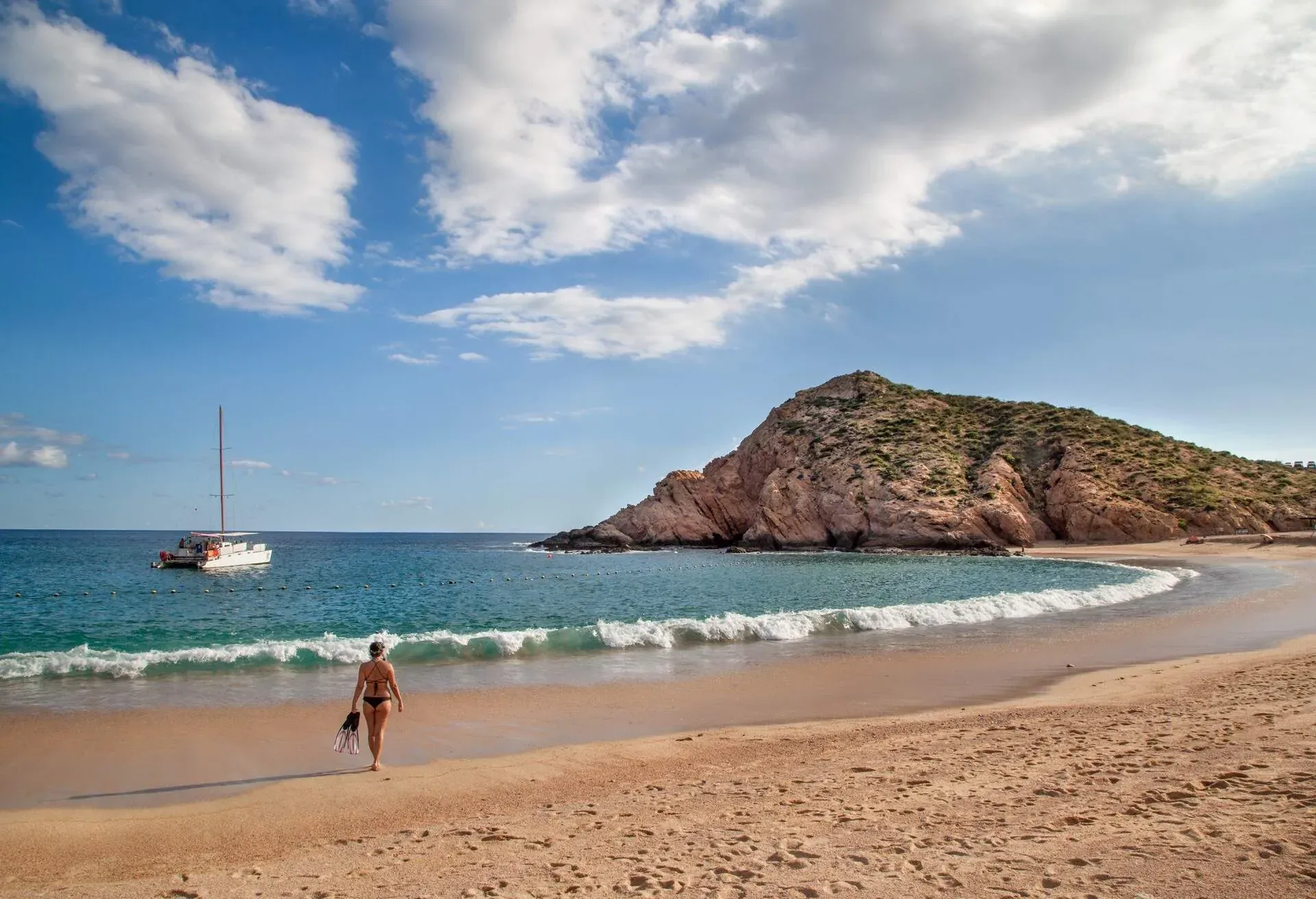
The Pacific Coast of Mexico was once overlooked for the more popular beaches of Cancun and Tulum, but it is fast becoming one of the best places in Mexico for a holiday. Along one of its coastlines, bordered by the US state of California on one side, is Baja California, one of the largest states in Mexico.
It’s home to great hikes, quaint towns, and stunning beach resorts. The border municipality of Tijuana is a bustling town synonymous with tequila shots, margaritas, and spicy food. However, to get the most out of this region, head further afield.
Baja California Sur
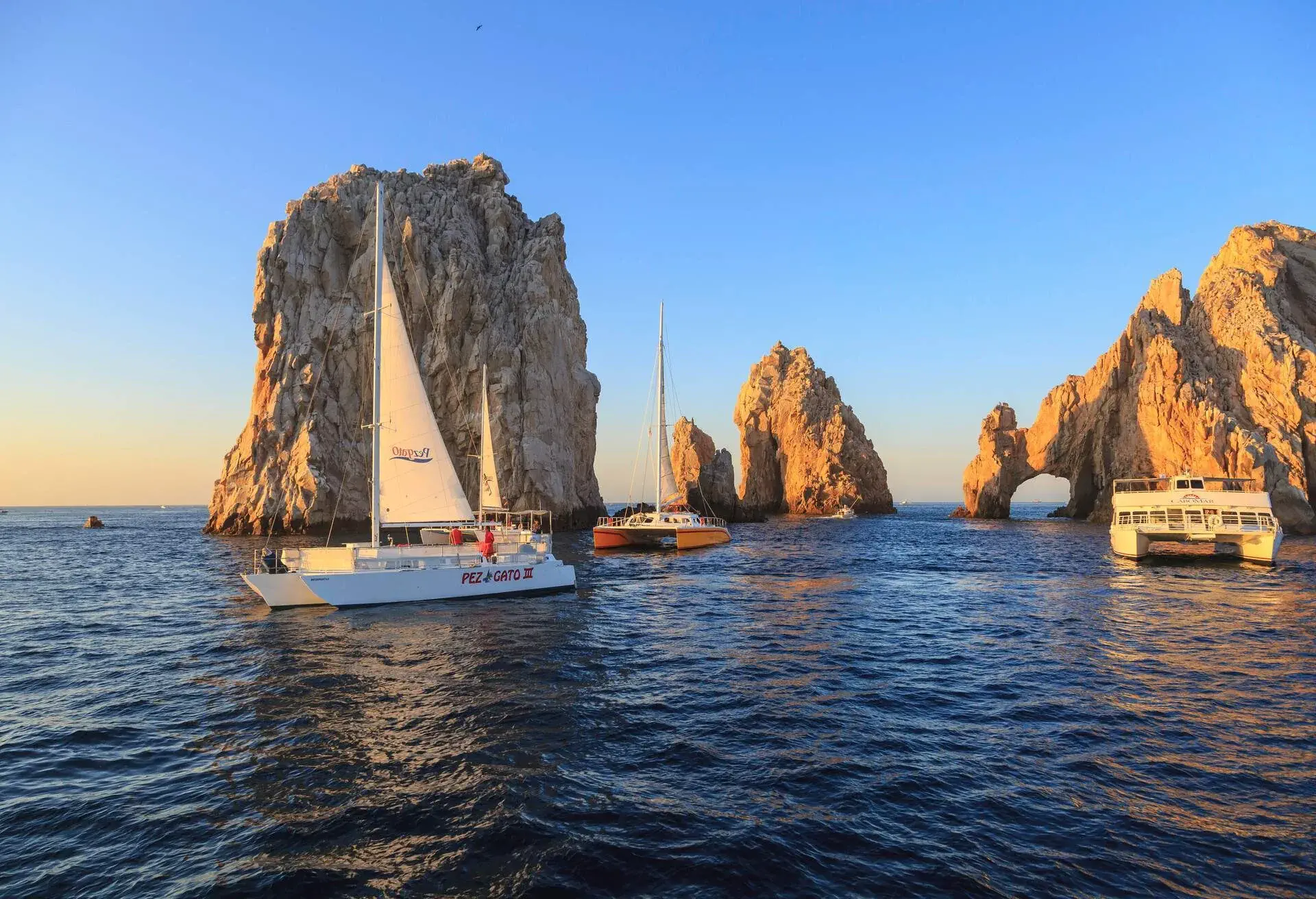
When you head to the southern parts, you will get to Baja California Sur, an almost perfect holiday destination. Its capital, La Paz, is a port city with lots of restaurants and bars and is famed for hosting various festivals. Probably the most renowned among them is the Carnaval La Paz, which takes place every February with parades, events, fireworks, and food stands everywhere in the city.
While one of the best resorts in the area is Los Cabos, where you’ll find cobbled streets flanked by lively bars and alfresco restaurants selling incredible seafood. The best time to visit this area is between October and mid-December; otherwise, it can get incredibly hot and wet. From mid-December, it gets rather crowded, which is absolutely fine if you don’t mind crowds, as it creates a great party atmosphere.
Looking for an active holiday? The shallow bay at Cabo Pulmo National Marine Park has one of only three live coral reefs in North America and is great for snorkeling and scuba diving. You can also kayak here. Alternatively, Desierto de El Vizcaino Biosphere Reserve is perfect for hiking, biking, and camping. During the winter months, you’re likely to spot spectacular pods of whales at San Ignacio Lagoon.
Rosarito
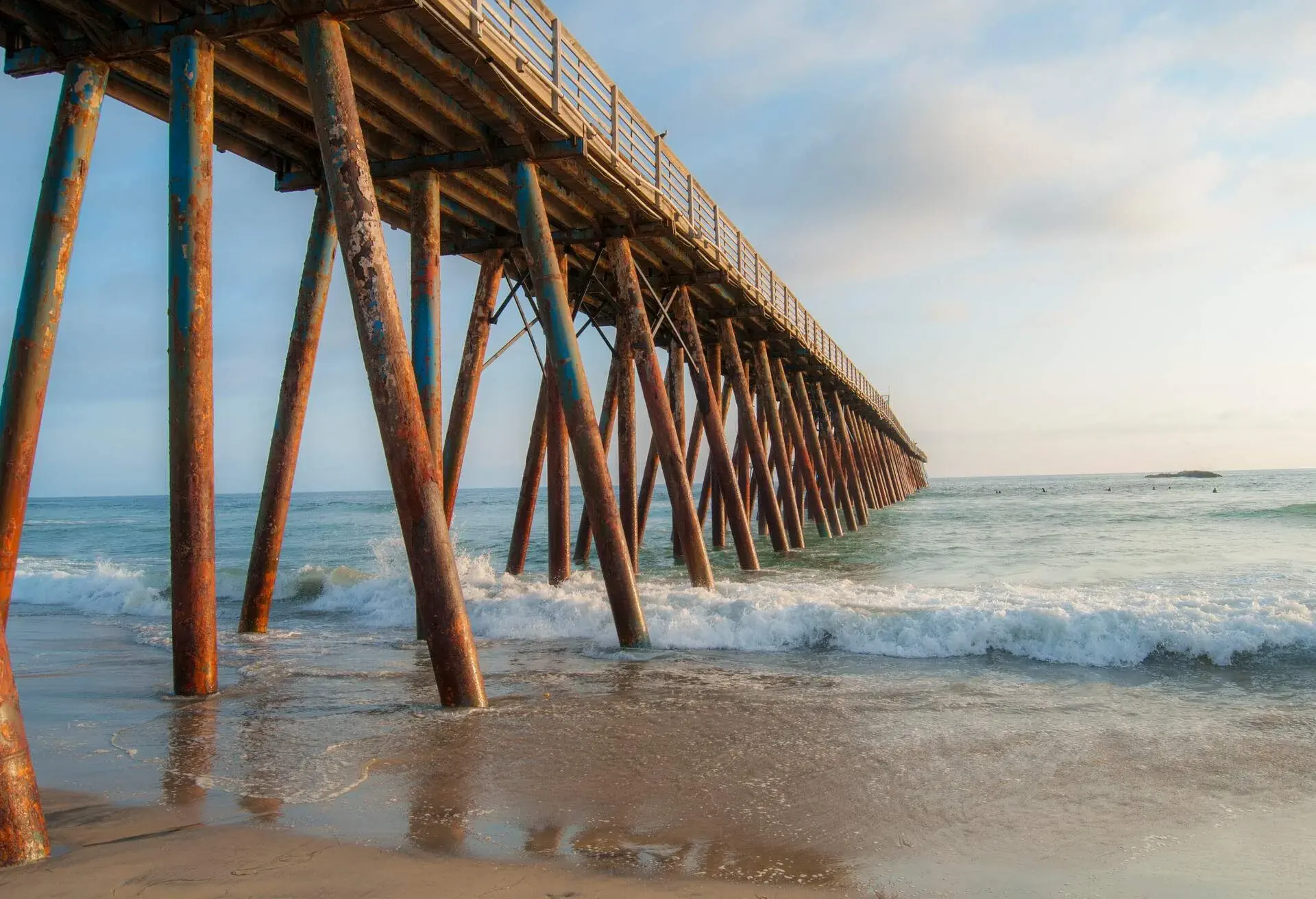
While Rosarito was once a getaway for Hollywood jet setters, it’s now one of the best places to go in Mexico to combine a beach holiday with adventure sports and good food. The beach has some spectacular sunsets and is a haven for extreme sport-lovers of all levels. Browse art galleries and artisan markets with local crafts or head to Baja Studios, where the replica ship for the Titanic movie was built. The movie itself was filmed nearby.
Puerto Nuevo
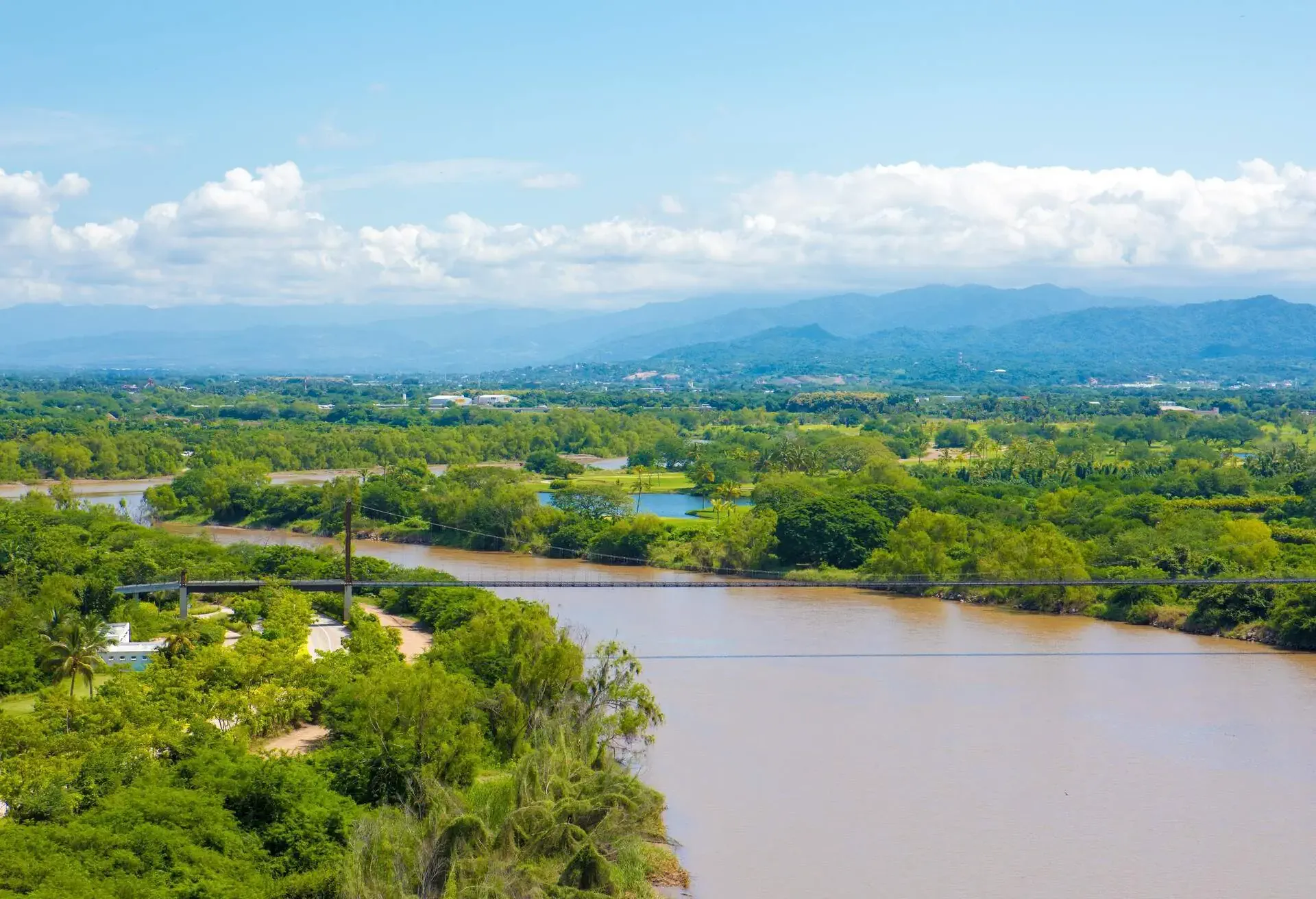
One of the best places in Mexico for couples is Puerto Nuevo, a foodie’s paradise with over 30 restaurants offering local and international cuisine. It’s the perfect place to head with your partner. Pamper yourself with a spa day at the luxurious Spa Ventana al Mar before heading to Villa Ortega for your lobster.
Yucatan Peninsula
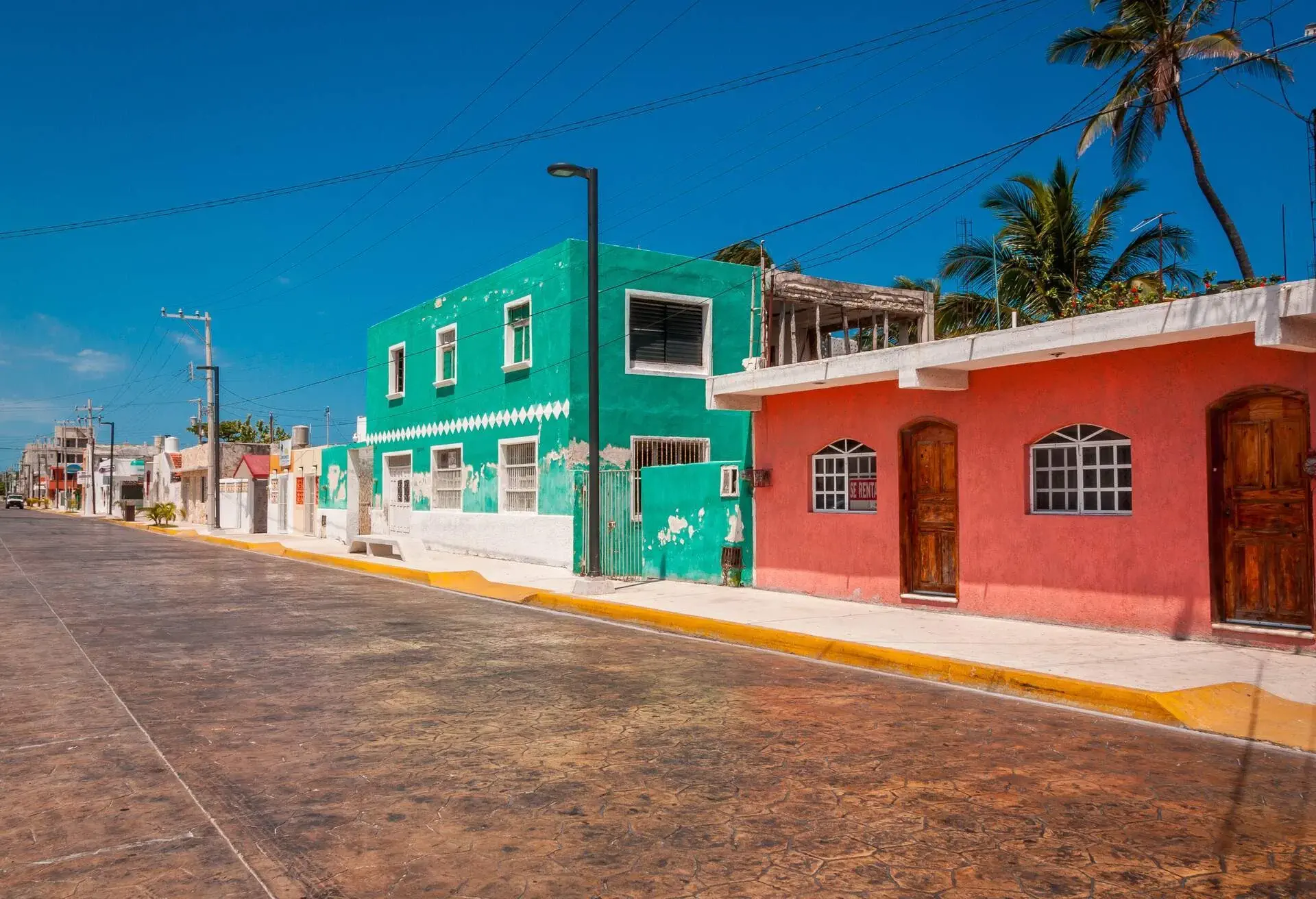
Probably one of the most beautiful places in Mexico is the Yucatan Peninsula, which separates the Gulf of Mexico and the Caribbean Sea. One of the best places to visit on Mexico’s Caribbean Coast, it’s home to the popular resort of Cancun and roughly 18.5 miles of coastline that make up the Riviera Maya further south. This is your ideal destination for a beach holiday in some of the best resorts in Mexico. However, there’s much more on offer than sipping cocktails on pristine white sands.
Cancun
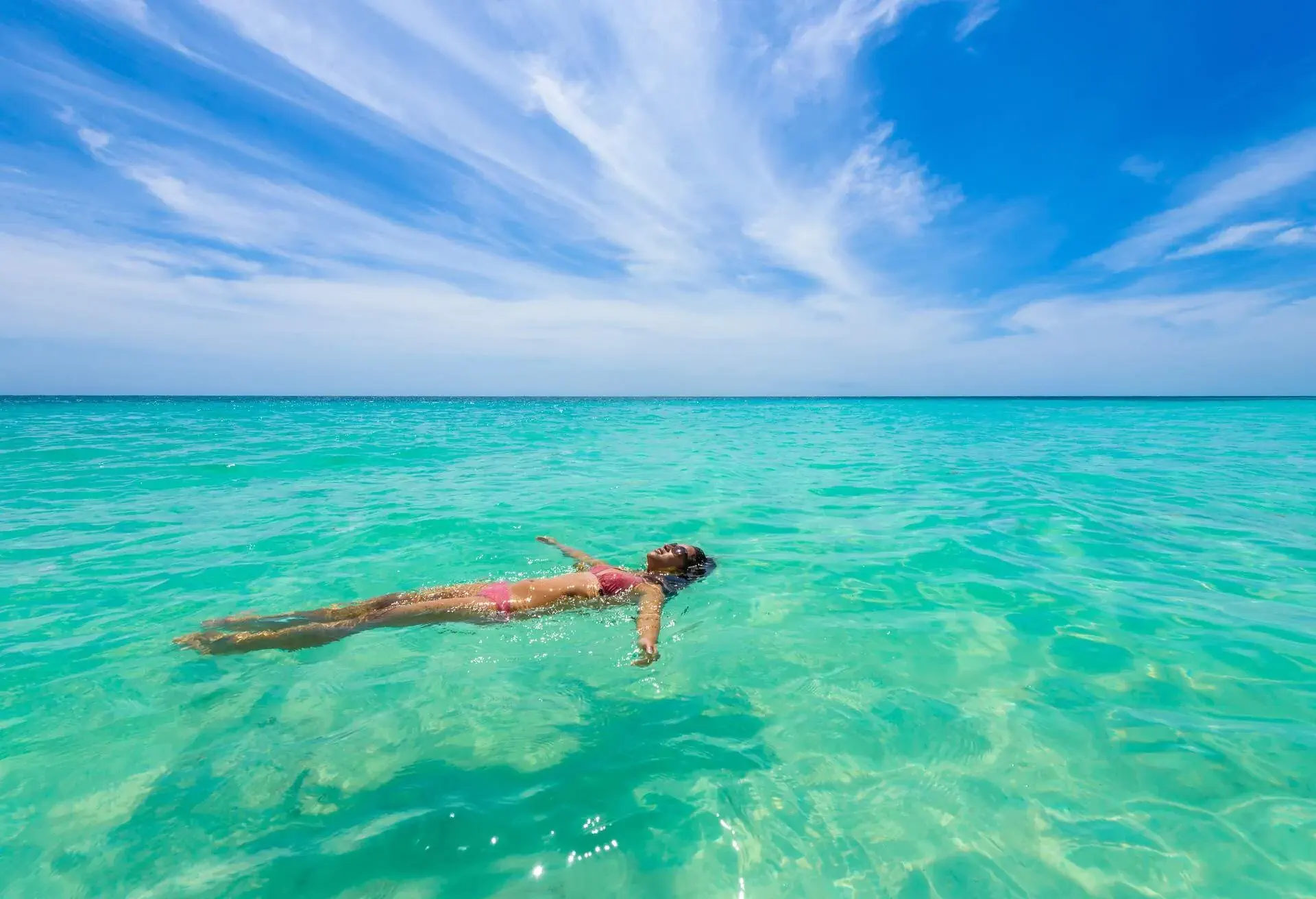
Top of your list of places to visit on the Yucatan Peninsula should be Cancun; it’s one of the best places to visit in Mexico with family. Boasting fine white-sand beaches with turquoise waters, the boulevard Kukulkan is lined by all-inclusive hotels on both sides and is the perfect place to stay in the area.
Most of these hotels have private beaches where you can lounge around and sip cocktails if you don’t want to venture further out of the resort. If you want to, head to El Centro, which has more traditional markets and restaurants.
The Mayan Museum of Cancun is packed with artifacts from nearby ancient Mayan ruins, and these ruins are also perfect for a day out. Both Chichen Itza and Tulum, some of the most popular ruins, are great for a day away from the beach, while there are various cenotes and quaint villages all over the place for more genuine Mexican experiences.
Tulum
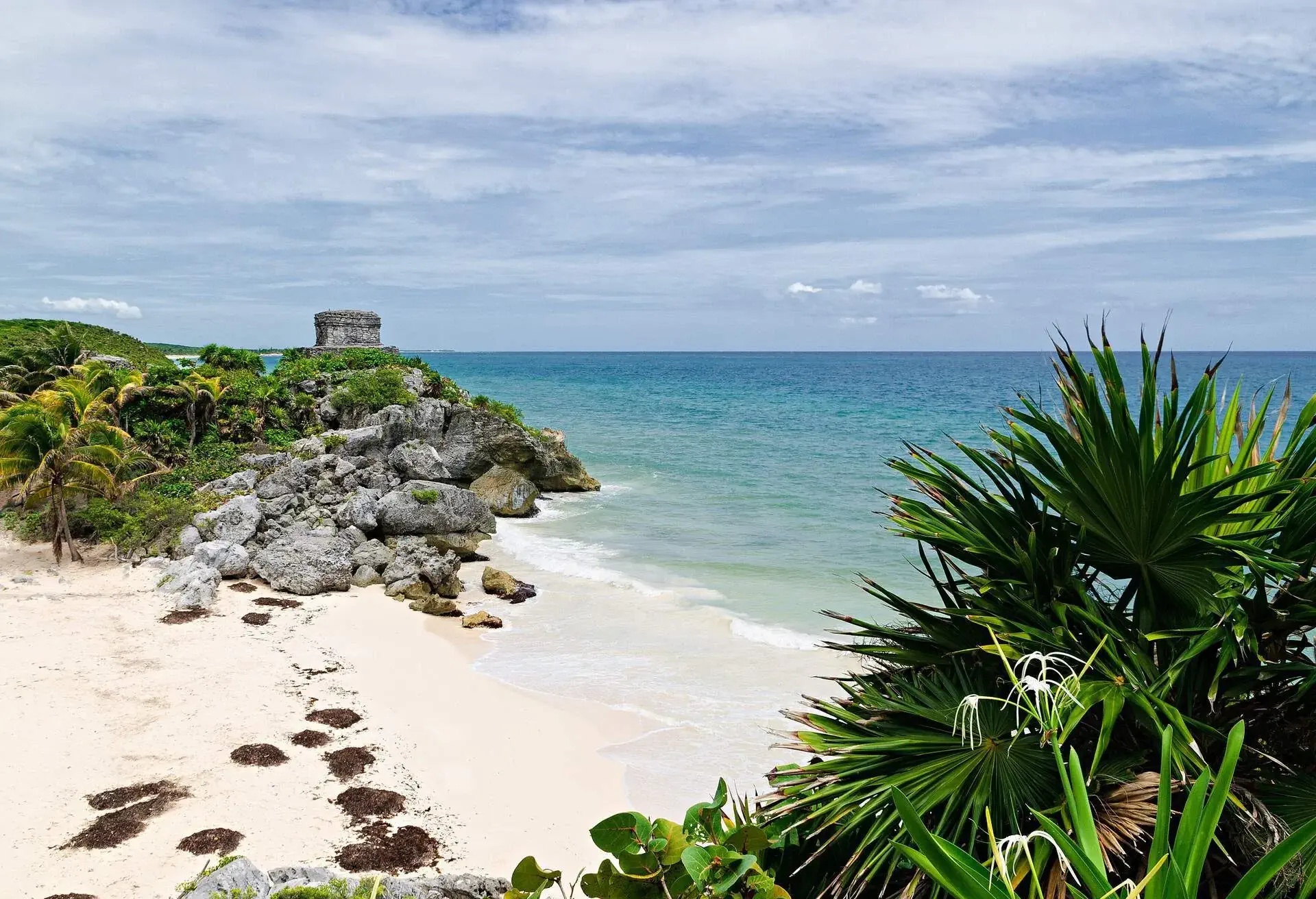
If it’s Mayan ruins you’re really interested in, then Tulum is the place to stay. This is home to some of the most famous landmarks in Mexico, including the Tulum Ruins and El Castillo. Fondly referred to as the lighthouse, it’s part of a complex of ancient Mayan ruins that stand on a cliff edge overlooking the Caribbean Sea, with a pristine beach below, Playa Ruinas.
Along Tulum’s coastline lie various beaches with rather charming, thatched-roof hotels to pick from. Head to Playa las Palmas for a quiet secluded beach with only two hotels on it. One of the most picturesque beaches in the area is Playa Pescadores, from which you can see the ruins in the distance.
If you arrive early enough, you could catch the fishermen bringing in their daily catch; it’s also good for snorkeling. The beach with the most popular accommodation is the party central, boho-chic Papaya Playa Project Beach, which has a beach club where you can lounge on comfy beach beds. Or better still, you can watch or indulge in a game of beach volleyball.
Playa del Carmen
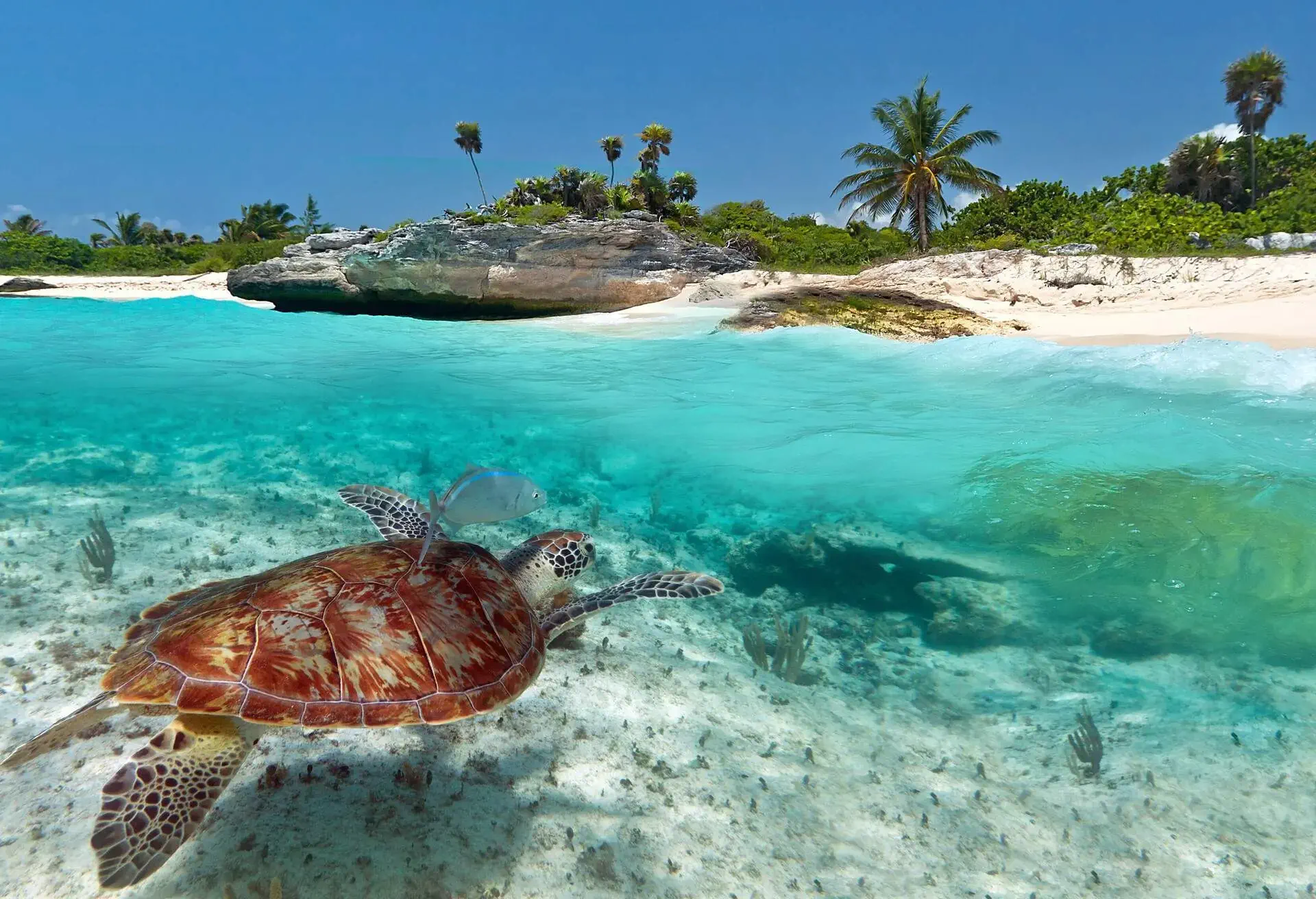
Further down in the state of Quintana Roo lies Playa del Carmen, the Riviera Maya’s trendiest spot; it has great options, especially if you’re visiting Mexico with family. It’s your perfect base for touring other areas in the region, like the ancient ruins in Coba, Tulum or nearby Cozumel.
Punta Esmeraldas in the northern part of town is where to find a calm and beautiful cenote shallow enough for kids to dip in, with a gorgeous beach for them to build sandcastles on. One of the top things to do away from the beach here is to head to El Acuario de Playa del Carmen, which has over 200 species of fish and 45 exhibits. Kids are bound to love it.
Meanwhile, Parque Fundadores not only provides a great playground for children, but it’s also one of the best places to watch a sunset in the town. The Portal Maya statue, a roughly 50-foot-high sculpture that pays homage to the Mayan culture, is where crowds gather most evenings. It has become the go-to place to watch the last rays of the golden sun as it dips beyond the sea. The roughly mile-long bustling stretch of beach at Quinta Avenida is where all the restaurants, bars, and shops are located.
Cozumel
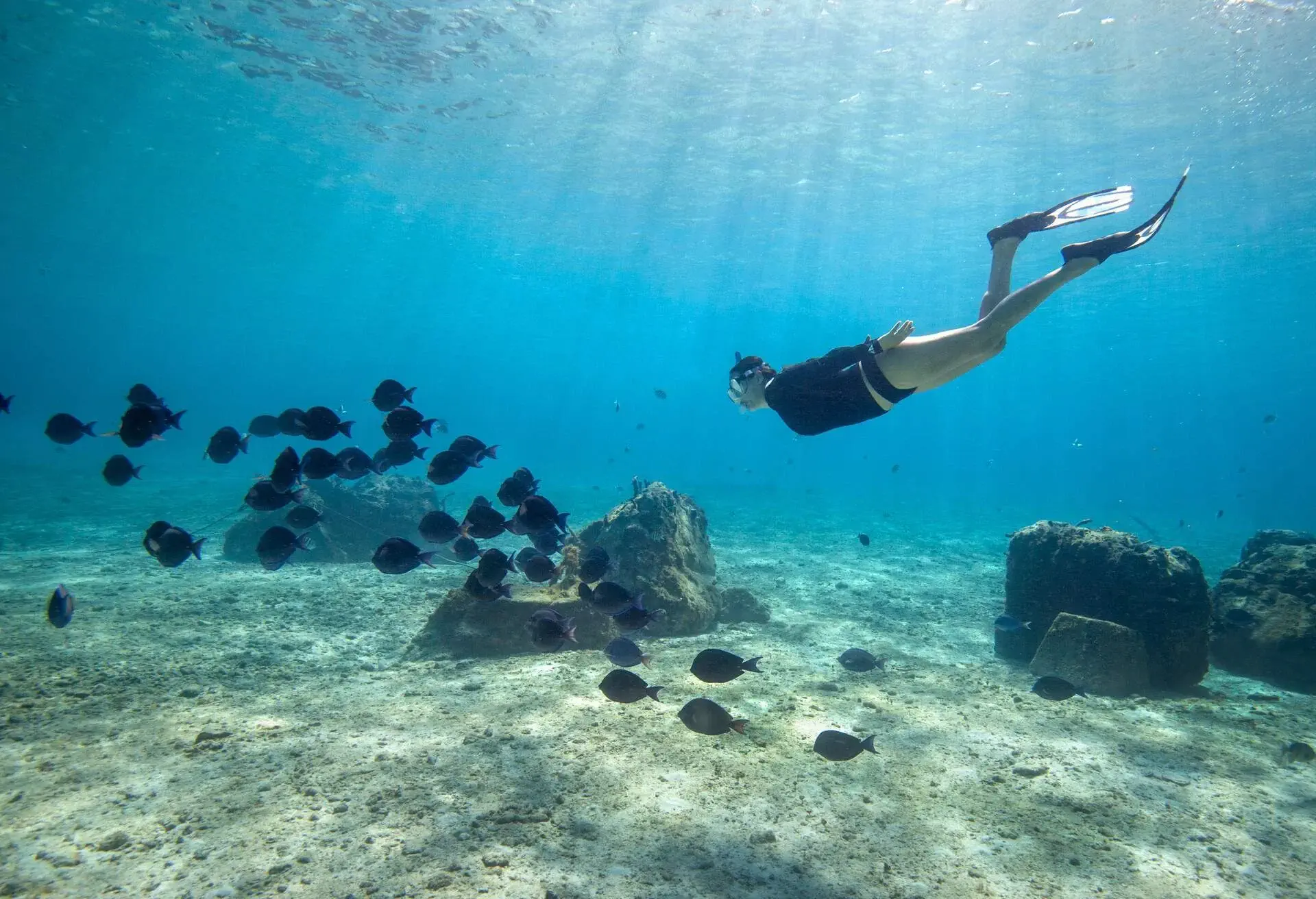
Just a ferry ride across from Playa del Carmen brings you to the island paradise of Cozumel, the third largest island in Mexico. It’s much quieter than Playa del Carmen across the waters and has whiter beaches; it’s also great for scuba diving. Arrecifes de Cozumel National Park is home to some of the best diving spots on the island, where you can dive down to see the submerged Mesoamerican Reef and Museo Subacuatico de Artes sculptures.
The island is so small you can easily get around it on a buggy, which are available to hire. On one side of the island is San Miguel, which is where you’ll find the best hotels and restaurants. It’s also home to the Mayan ruins of San Gervasio, near San Miguel, and some of the oldest ruins, in the picturesque town of El Cedral.
Merida
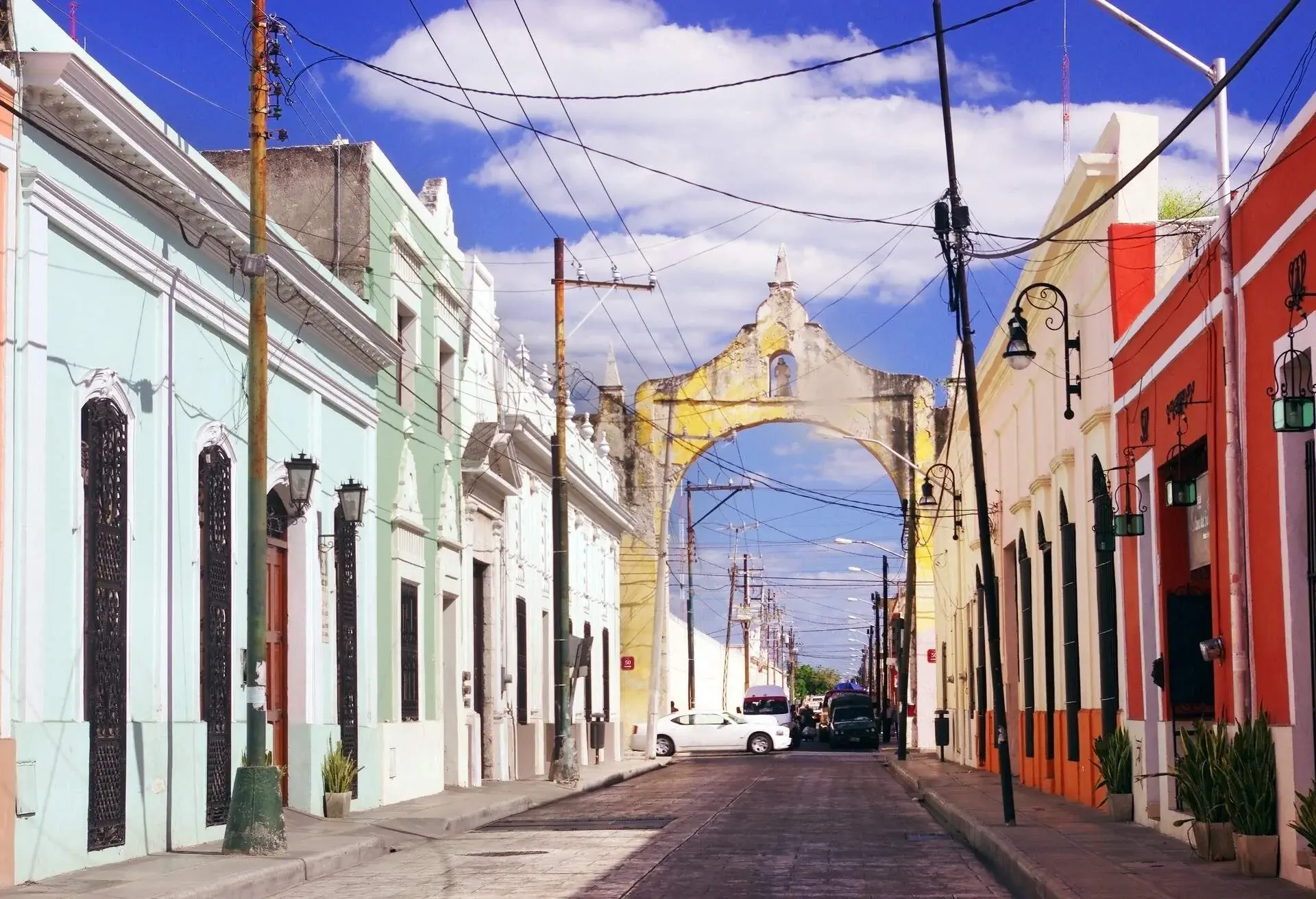
Located in the northern part of the Yucatan Peninsula is the Yucatan state, where you will find the city of Merida, its capital city. Mixed in with its Mayan heritage is a vibrant city with colonial-era mansions and churches that were built using stones from a Mayan town that once stood on the site of this modern city. Along wide boulevards where luxurious hotels co-exist with these historic cultures, it’s a perfect base to visit the other existing ruins and colorful villages (pueblos) that dot the state.
Merida is known for its gastronomic experiences with distinct Yucatec flavors that mix Spanish, Lebanese, Caribbean, and European styles into its cooking. There are plenty of fine-dining restaurants and colorful markets, such as the Mercado Lucas De Galves and Mercado Santiago, through which you can take a guided tour to sample local specialties. Otherwise, head to Mercado 60, a food hall with around 18 eateries to pick from for casual dining, or the yellow-walled courtyard of Museo de la Gastronomia.
Valladolid
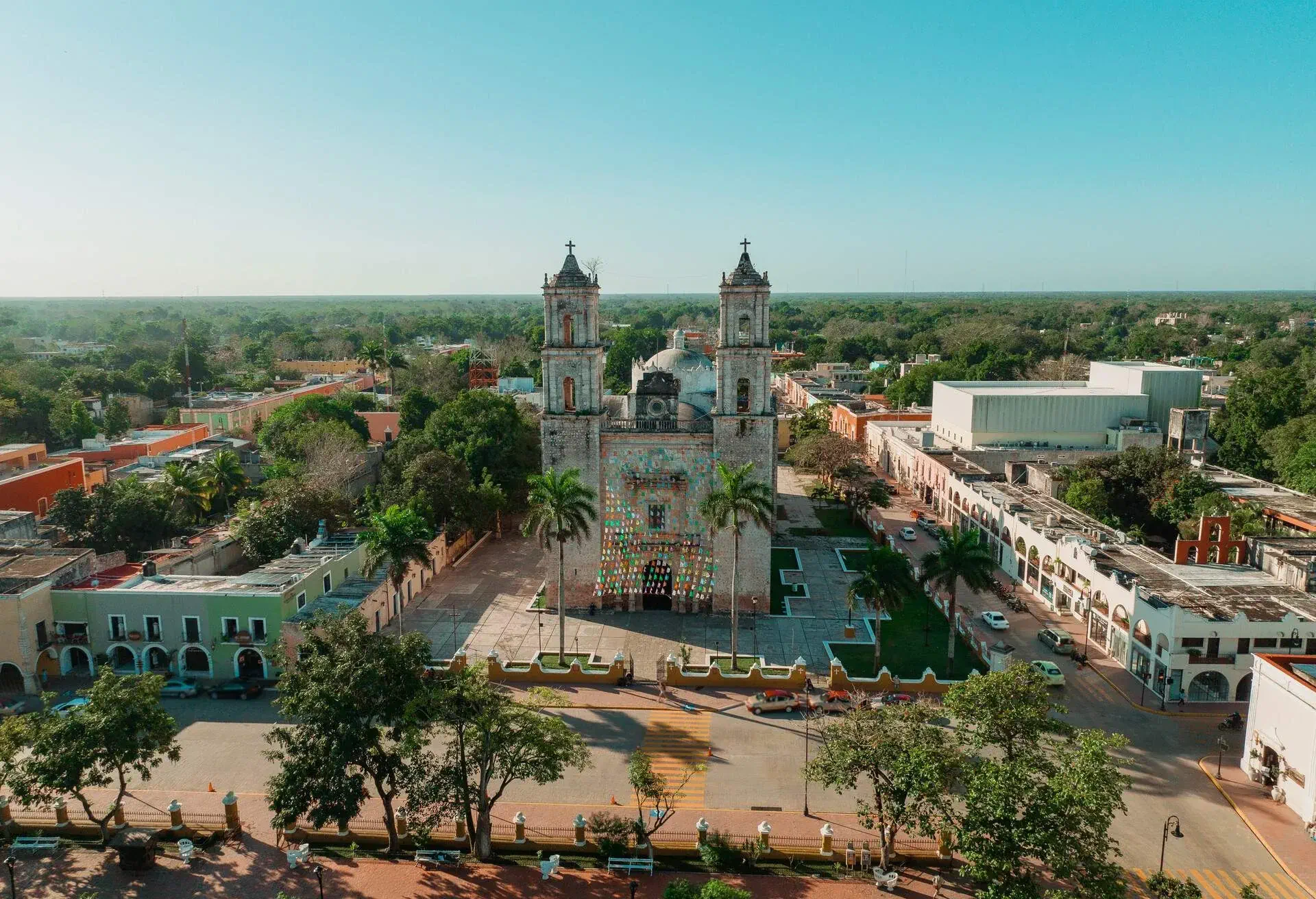
The second largest city in the Yucatan state, Valladolid is one of the pueblos you can visit from Merida. This charming city is a treasure trove of cobbled streets with locals lounging around, boutiques in colonial-era buildings and haciendas serving alfresco meals.
Doors open into incredible courtyards reminiscent of an era gone by. One of its many draws is the great architecture bequeathed by the conquistadors who were keen to leave their stamp on the area. All around town, you’ll find Havana-like buildings in a burst of colors, earning it the status of a pueblo. Head to Calz. De los Trailers for a good example of this heritage.
One of the best things to do in Mexico is to swim in a cenote ( a natural pool) and Valladolid has a wide variety to pick from. Zaci is located a few minutes from the main square. One of the most beautiful in the area is Ik Kil, close to the Mayan ruins of Chichen Itza. Suytun is another; it’s a cave-like cenote with beautiful blue waters and chandelier-like structures hanging from its stoned ceilings. It is one of the most popular, thanks to trending pictures on social media.
Izamal
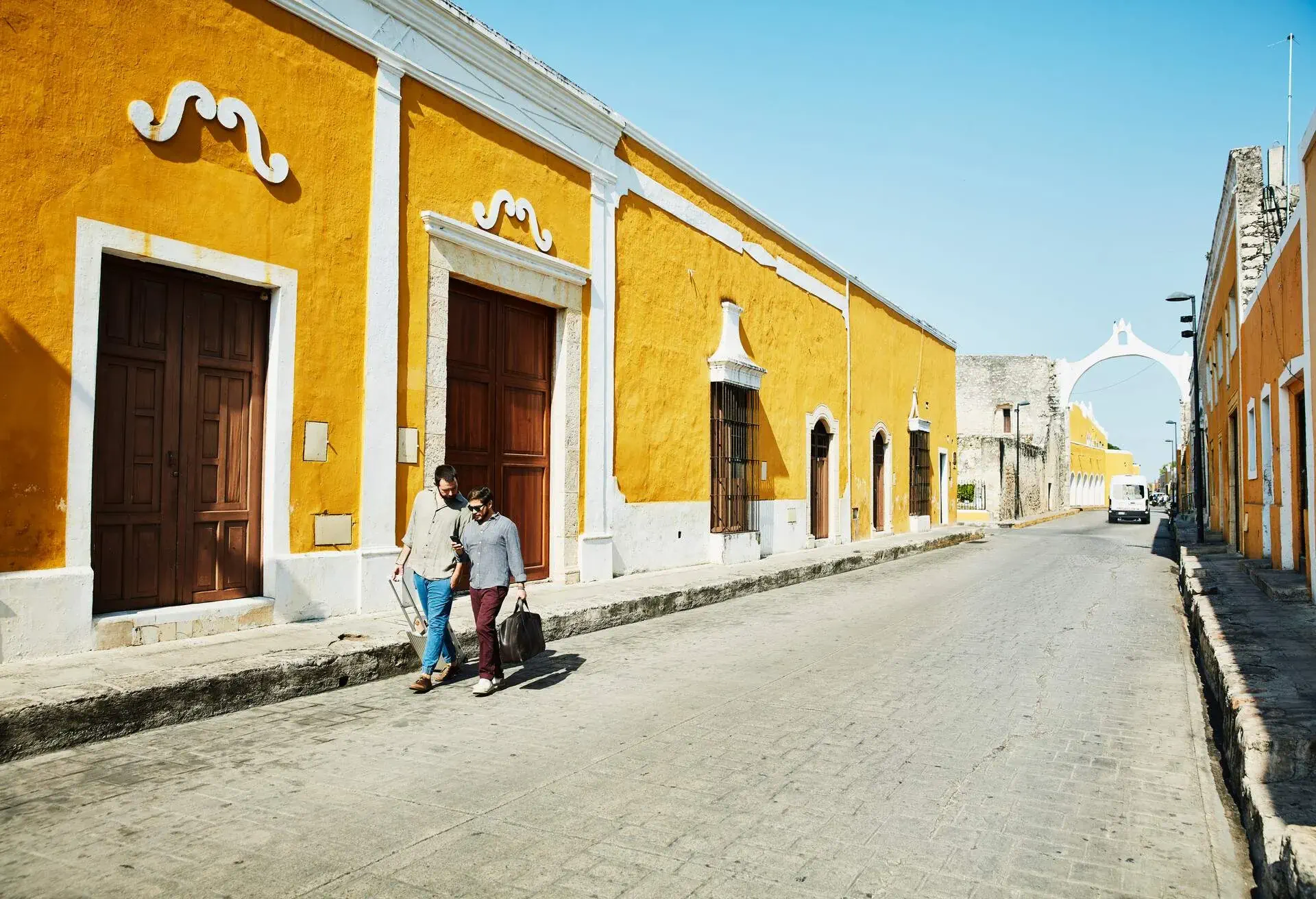
Fondly known as the ‘yellow town’ (virtually the whole town is painted in yellow), Izamal is the other pueblo close to Merida. Largely unknown to many travelers, it’s one of the best examples of a pueblo mixing both Spanish and Mayan heritage. Good weather graces the area and, along with outstanding culinary experiences, it is great for a laid-back, authentic break. Once the capital of Yucatan, before it moved to Merida, for a small town it packs a range of accommodation to suit every budget.
A main attraction here is the Convento de San Antonio de Padua, whose colonial structures were erected on top of a Mayan site that’s the central point of the city. It’s a mesmerizing structural wonder and very much worth a visit. Don’t miss out on the Spanish colonial center, a street lined with colonial-era buildings, yes, all painted in yellow. Because of its high temperatures and small population, the town center can feel eerily quiet during the day but comes alive in the evenings.
Campeche
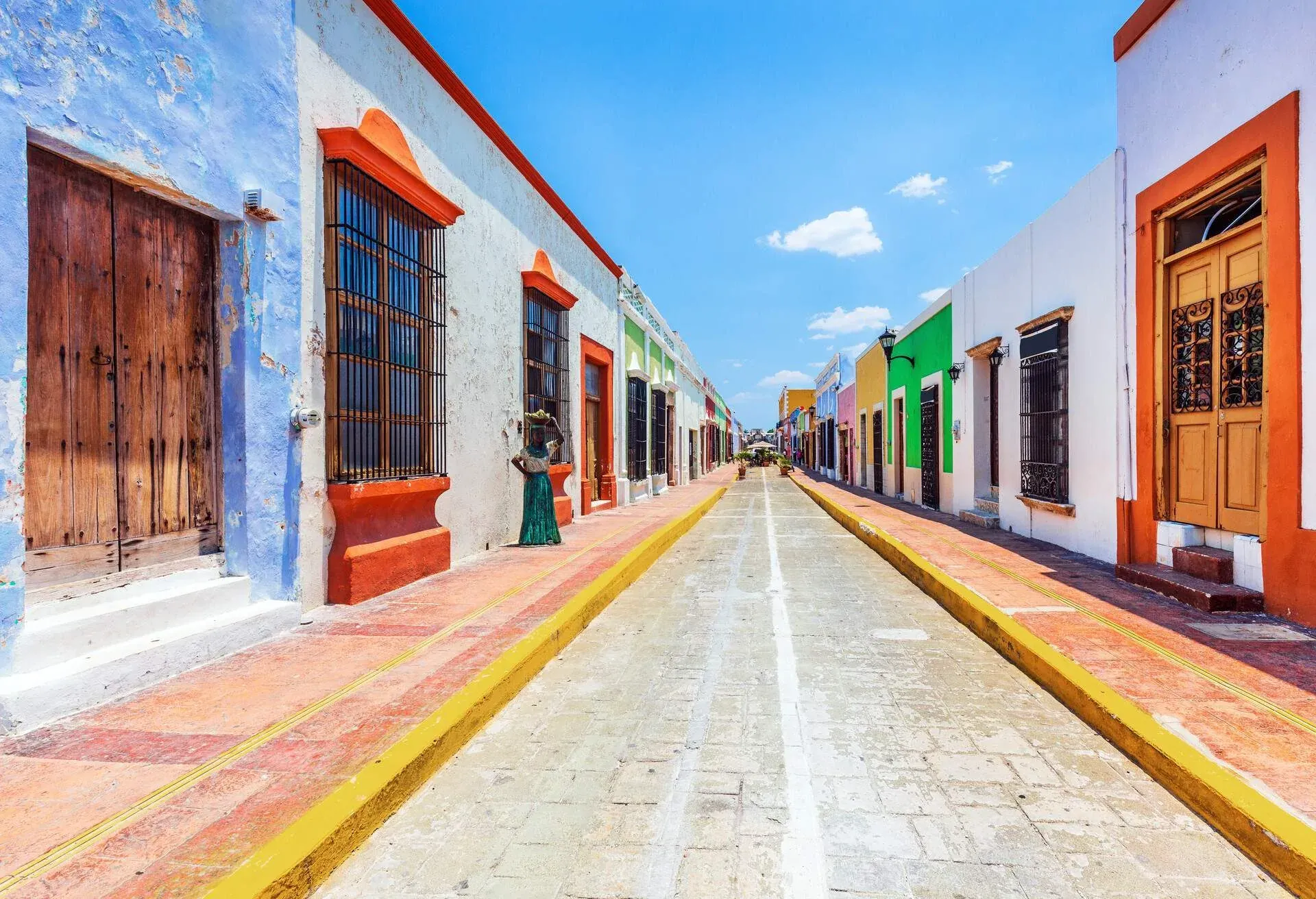
If you visit the Gulf of Mexico you cannot miss Campeche, the capital of a state of the same name. This port city was once the site of a booming Mayan civilization. The ruins of Calakmul, Isla Jaina, and Edzna close by attest to this.
It’s a historic fairyland with a walled city center (built to protect it from pirates) and is also a UNESCO World Heritage Site. Within these walls are narrow cobblestone streets, along which stand mansions in soft pastel hues.
However, the authentic buzz of the city lies outside these walls, where the beating heart of the city is a bustling market and the old docks. Malecon is a roughly 4-mile-long promenade on the waterfront, great to watch the beautiful sunsets or sunrises that grace the region.
On the outskirts of the city stand two well-preserved colonial forts as if on guard. One of these forts is one the most important museums of Mayan history, the Museo de la Arquitectura Maya, containing exceptional archaeological pieces.
Things to know before you board your plane to Mexico
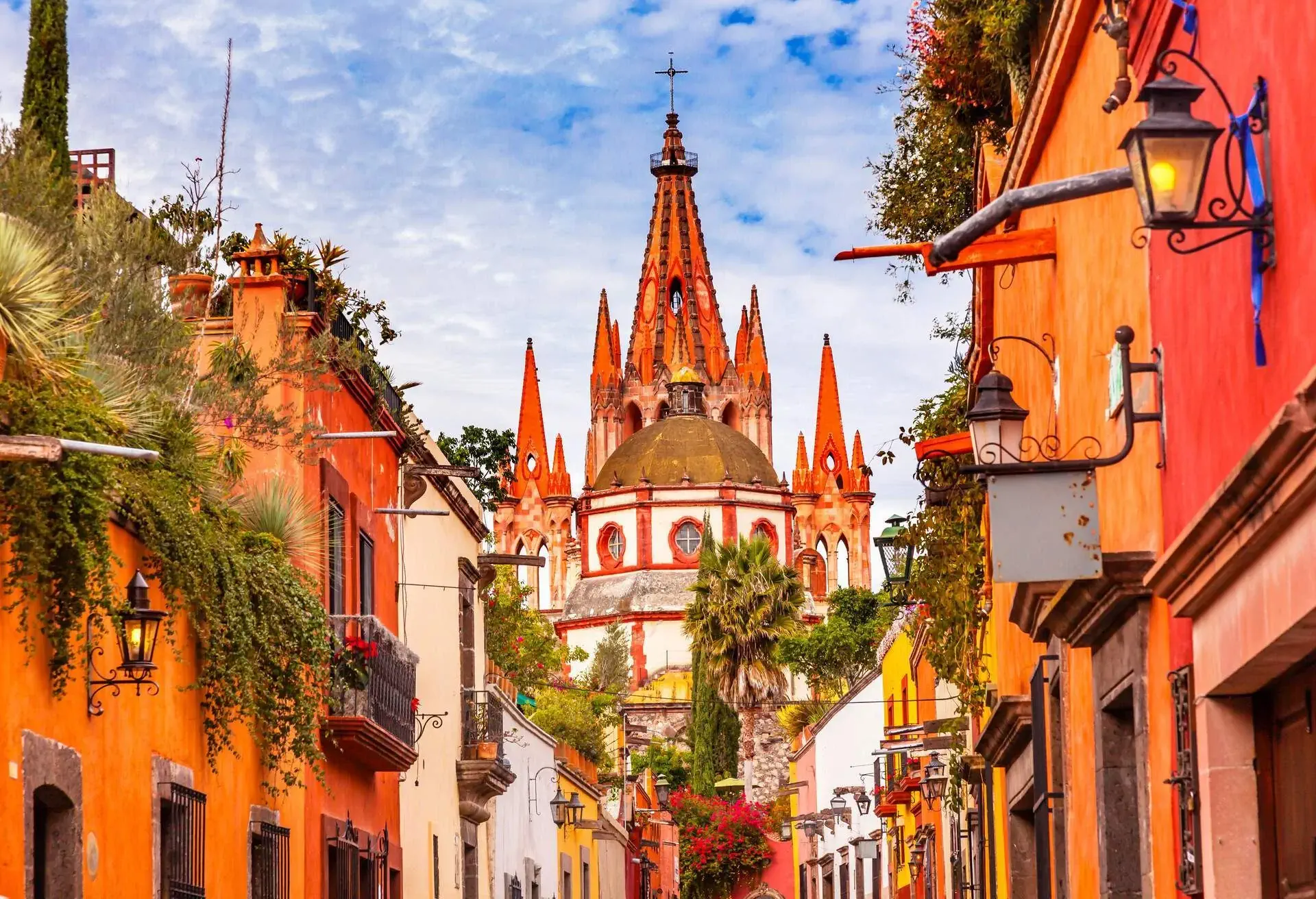
If you haven’t quite decided if a trip to Mexico is for you, the below frequently asked questions should hopefully help.
What is Mexico famous for?
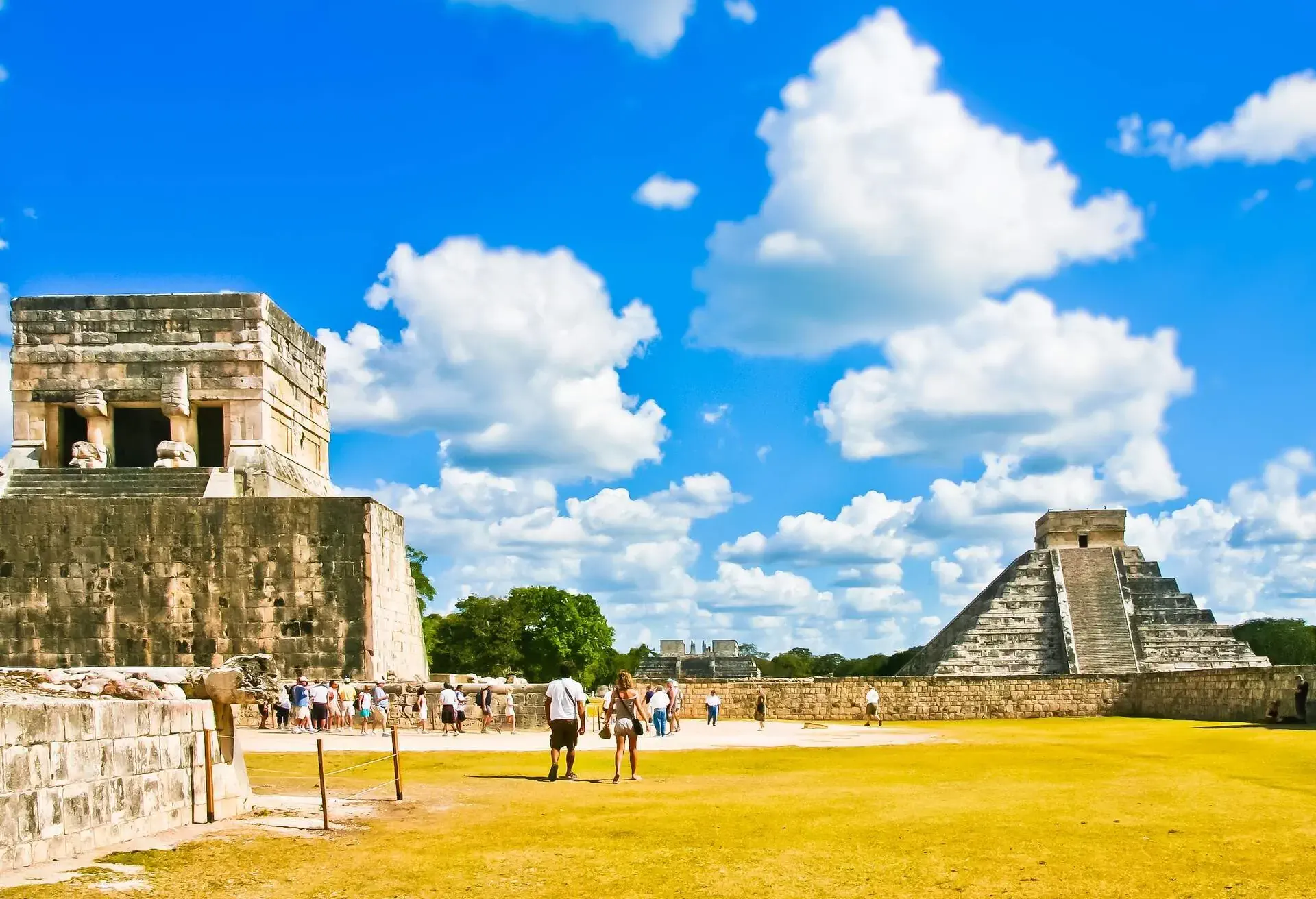
From pristine beaches to large rainforests, Mexico is a treasure trove of Mayan ruins and quaint, colorful cities. Some of the best places to visit in Mexico, they offer a glimpse into a fascinating ancient civilization.
When is the best time to visit Mexico for good weather?

Although Mexico is hot throughout the year, it has a rainy season that runs from around May through to October. To avoid this season, aim to travel to Mexico between the months of December and April; however, the best weather is between December and February, which are the coolest months in Mexico.
Is Mexico good to visit in winter?
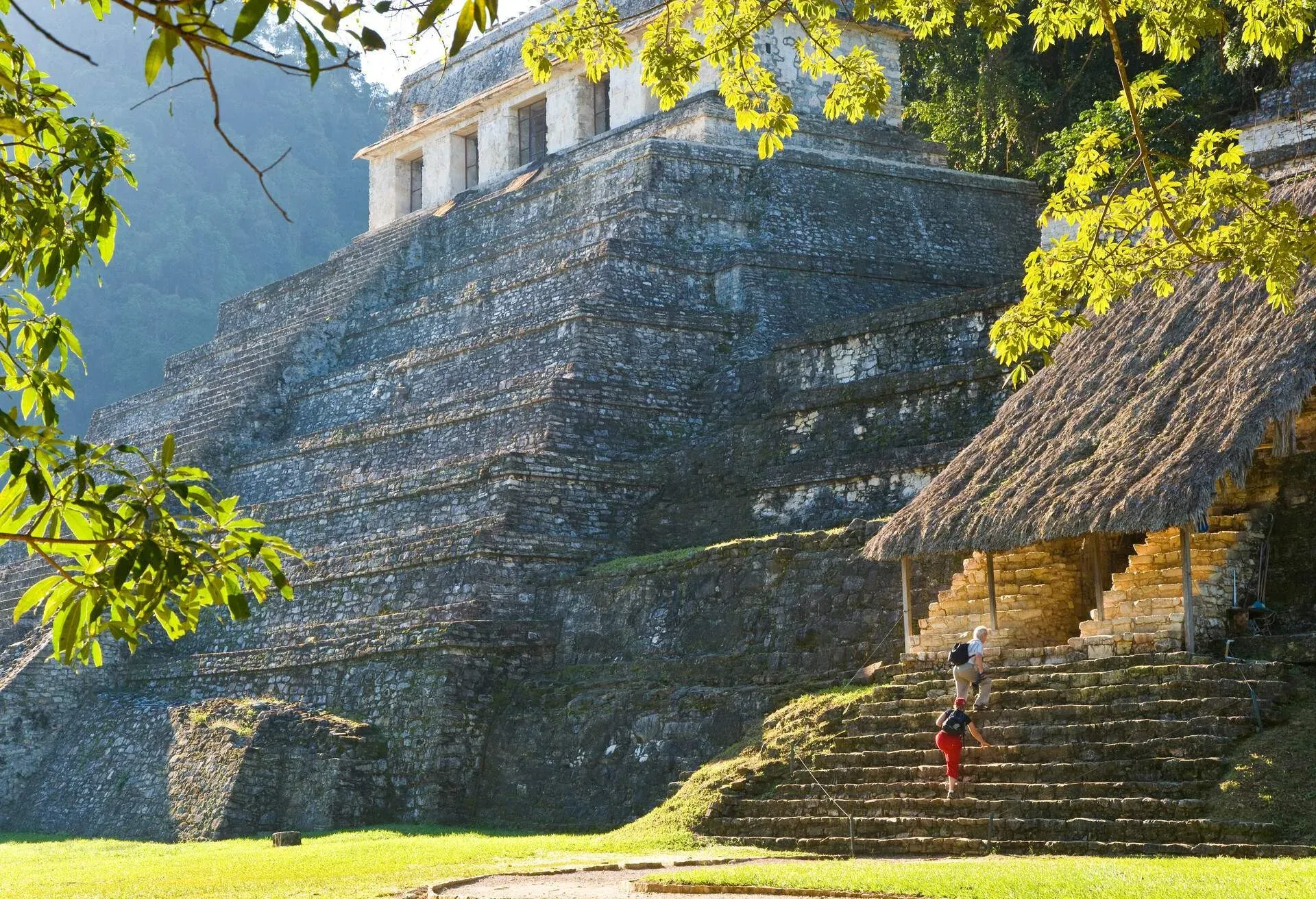
Winter in Mexico is from mid-December and runs through to mid-March. The average temperatures are a rather balmy 68°F to 77°F during the day with roughly 10 hours of daylight. Making winter a great time for a Mexican beach holiday. Areas in high-altitude regions can be cooler in the mornings but the afternoon sun soon burns the chill off.
Inspired by this article? Check out our guide to exploring Mexico City. Or if you are a foodie read our piece on restaurants worth traveling for.

